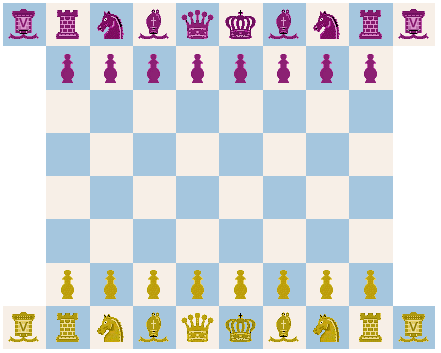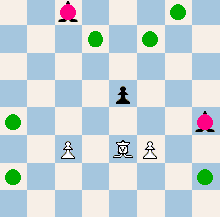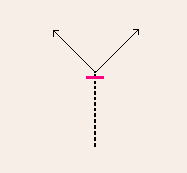

The Venator is a bifurcation piece. It always moves in two legs. It slides orthogonally and jumps any piece to the next square, from where it slides on any of the two diagonals in the prolonged movement direction. The square behind the jumped piece must be empty and the Venator cannot stop on this square. If the Venator lacks screens for jumping, then it cannot move. The Venator is worth the same as a knight or bishop (preliminary estimate). Other rules are the same as in standard chess, except for the possible promotion to Venator. Despite the fact that the Venator is dependent on screens for moving it is a dynamic piece that puts great demands on the chessplayer. It is not hard to activate it from its initial position in the corner, although this demands planning. The Venator is a relative of the Korean cannon (in Korean Chess), which can only move if there exist pieces to jump over.
The Venator ("Hunter") was a gladiator type in ancient Rome that was foremostly pitted against wild animals. The board type was conceived by Gustav III of Sweden (1746-92) for his own chess variant Gustav III's Chess. Venator chess, and the new Venator piece, were invented by undersigned, September 2006.
 The Venator always moves in two legs, the first is an orthogonal slide and the second is a diagonal slide that follows after a jump (red = capture).
The Venator always moves in two legs, the first is an orthogonal slide and the second is a diagonal slide that follows after a jump (red = capture).
 The Venator's movement principle. The screens, that are used for jumping, occur anywhere on the first leg. Compare with the Koran cannon principle below.
The Venator's movement principle. The screens, that are used for jumping, occur anywhere on the first leg. Compare with the Koran cannon principle below.
 The Korean cannon movement principle. In any of the four directions it can jump over a piece. It cannot stop before the screen.
The Korean cannon movement principle. In any of the four directions it can jump over a piece. It cannot stop before the screen.
• You can download my free Venator Chess program here, but you must own the software Zillions of Games to be able to run it (I recommend the download version).
• Don't miss my other chess variants.
© M. Winther (September 2006).